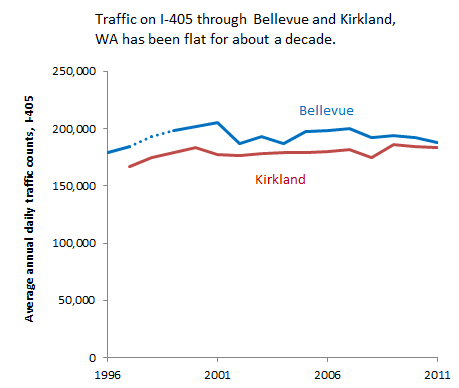OK, so we’ve already documented that total vehicle travel—as measured both by traffic volumes on specific segments of the roadway, and by total miles logged on the state highways—has remained roughly flat in much of Washington State for most of the past decade. Yes, there have been ups and downs, but car travel simply isn’t growing the way it used to.
So at risk of beating a dead horse, here’s a chart of average daily traffic on I-405 through Kirkland and Bellevue, WA. And in case you were wondering…yep, traffic is flat!
It is true, however, that traffic volumes at the north and south ends of I-405 have continued to grow in recent years, at least a bit. And the decline in Bellevue back between 2001 and 2002 looks a little sketchy—was it real, or a data anomaly? Regardless, the recent traffic trends through the most densely populated areas east of Lake Washington look a lot like the traffic trends through the center of Seattle: a bumpy plateau, rather than the steady, uninterrupted ascent that traffic models typically predict.


Comments are closed.